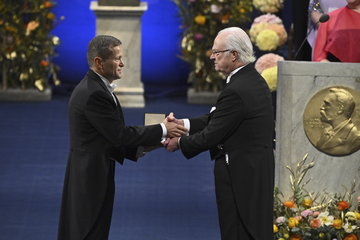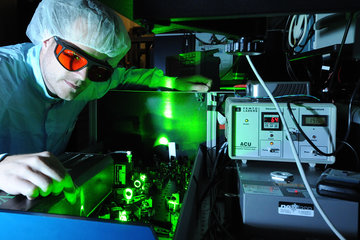Award-winning diagnosis of brain tumours
Hai Yan and Andreas von Deimling have been awarded the International Prize for Translational Neuroscience 2021
Not all cancers are the same – there are over 100 different types of brain tumour alone. Distinguishing between them can be difficult but is nevertheless essential for effective treatment. This year, the Gertrud Reemtsma Foundation is awarding the International Prize for Translational Neuroscience to two researchers who have made a significant contribution to improving the diagnosis of brain tumours. A patient’s cancer can thus be classified more precisely and the therapy adapted accordingly. Hai Yan from Duke University School of Medicine was instrumental in identifying two tumour proteins that are typical for certain sub-groups of gliomas. Andreas von Deimling and his group from the University of Heidelberg have developed antibodies that bind to these altered proteins. The tumours can now be classified at the molecular level. The €60,000 International Prize for Translational Neuroscience – formerly the K.J. Zülch Prize – will be awarded on 26 August in Cologne.

Cancer cells multiply uncontrollably, thereby displacing healthy cells and destroying tissue. But that’s where the similarities end. Uncontrolled cell division can have various causes, and the individual cancers must therefore be treated accordingly. The more precisely the characteristics of the respective cancer cells are known, the more specifically the malignant cells can be combated.
Until now, brain tumours had been classified mainly by staining tissue samples and comparing the appearance under a microscope. However, the origin and molecular characteristics of cancer cells, which are often decisive for further therapy, are not always visible with this type of diagnostics. It had therefore not been possible to distinguish between the different tumour types in some cases.
Hai Yan has researched the characteristics of the most common types of brain tumours: gliomas. Sub-forms of these incurable glial cell tumours form typically modified proteins. IDH1 and IDH2 have been found by his team and his collaborators to be frequently altered with an amino acid replaced at a specific position in certain types of gliomas. This distinguishes tumour cells from normal body cells as well as from other tumour sub-types in which the proteins are present in their natural form.
Hai Yan found that one sub-group of gliomas can be simply distinguished from others by looking at the distribution of the commonly mutated proteins. He and his collaborators identified diagnostic biomarkers that significantly improve the differentiation of these sub-groups. The World Health Organisation has included the tumour types they discovered in the classification of tumours of the central nervous system. Yan and his team also investigated how the altered proteins affect the metabolism and immortality of the tumour cells. Tailored therapies against these forms of glioma are based on these findings.
Antibody against mutated IDH1 protein
Andreas von Deimling also works on diagnostic markers of brain tumours. He and his team have developed an antibody that binds to mutated IDH1 protein. The highly specific antibody recognizes the mutation and binds to the protein only when exactly this mutation is present. It had previously not been possible to distinguish between normal and mutated IDH1 using conventional staining methods.
With the help of the antibody, sub-types of gliomas – astrocytomas and oligodendrogliomas – can be diagnosed beyond doubt and differentiated from other types of brain tumours. The patented antibody is now routinely used worldwide in brain tumour diagnostics. With the help of this antibody, researchers can visualize the tumour cells and their immediate surroundings in the brain tissue. This has already allowed important insights into the development and progression of these tumour diseases.
Von Deimling and his colleagues have also developed a diagnostic system based on the DNA methylation pattern in the tumour cells. These chemical modifications in the genetic material can be used to determine from which cell type a tumour originally arose. In the highly modified cancer cells, this can often no longer be clearly determined. However, knowing the origin is important for designing an effective therapy against the malignant cells.
The prize winners
Hai Yan studied medicine at the Peking University Health Science Center, where he received his medical degree in 1991. In 1996, he received his PhD from the College of Physicians and Surgeons at Columbia University, New York. He then went on to the Howard Hughes Medical Institute of Johns Hopkins University in 1997 and to Duke University Medical Center in 2003, where he is now professor of pathology and neuro-oncology.
Andreas von Deimling studied medicine in Fribourg and began his clinical training in 1988 at the University Hospital in Zurich, Switzerland. He then went on to the Neuro-Oncology Department of the Massachusetts General Hospital in 1990 and to the Institute of Neuropathology at the University of Bonn in 1992. In 1998, he became Director of Neuropathology at the Charité of Humboldt University in Berlin. In 2007, he moved to Heidelberg to become Director of Neuropathology at the University of Heidelberg and Director of the Clinical Cooperation Unit Neuropathology at the German Cancer Research Center.












